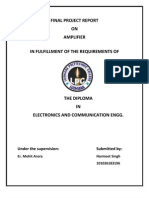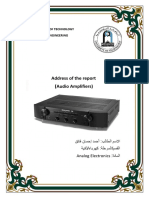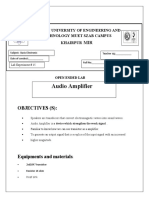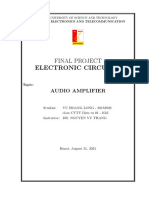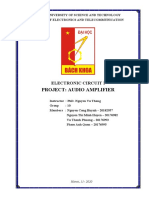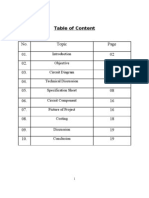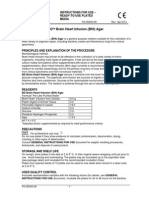STATE BOARD OF TECHNICAL EDUCATION
GOVERNMENT OF KERALA
SEETHI SAHIB MEMORIAL
POLYTECHNIC COLLEGE TIRUR
DEPARTMENT OF
ELECTRONICS ENGINEERING
PRINCIPLE OF ELECTRONICS
COMMUNICATION(3042)
OPEN ENDED PROJECTS
SIMPLE AMPLIFIER USING LM-386
NAME :
CLASS. :
REG NO :
ROLL NO:
� SIMPLE AMPLIFIER USING LM-386
AIM:
Construct a simple amplifier using lm-386
TOOLS REQUIRED:
Soldering iron
Soldering lead
Connecting wire
COMPONENTS REQUIRED :
Resistor (1k ×1 )
IC (LM 386 ×1)
Speaker ( ×1)
Battery (9v)
Capacitors
(1000µf ×1,
100µf ×1
104 pf ×1 )
WORKING PRINCIPLE:
A simple amplifier is an electronic device designed to increase the strength
(amplitude) of an electrical signal, typically an audio signal. The basic
operation of a simple amplifier involves taking a weak input signal and making
it stronger at the output while preserving the essential characteristics of the
original signal. The amplifier's functionality can be broken down into several
stages.
The amplifier begins with an input stage where the weak signal is applied. This
could be an audio signal from a microphone, a musical instrument, or any
other source. The heart of the amplifier is the amplification stage, often
composed of active components like transistors or operational amplifiers (op-
amps). These components are configured to provide gain to the input signal,
determining how much the input signal is magnified. Gain is typically
adjustable, allowing users to control the output volume.
Amplifiers require a power supply to operate. The power supply provides the
necessary electrical energy for the active components to amplify the signal.
�This can be a direct current (DC) voltage from a battery or an alternating
current (AC) voltage from the mains, depending on the amplifier type. The
amplified signal is then passed to the output stage, which prepares it for
connection to external devices such as speakers or headphones. In audio
amplifiers, the output stage often involves converting the low-power electrical
signal into a form suitable for driving speakers or headphones, requiring more
power.
The output stage is connected to a load, usually a speaker or another device
that consumes the amplified signal. Some amplifiers incorporate feedback
circuits to improve linearity, reduce distortion, and control the amplifier's
overall performance. The final result is an amplified output signal that mirrors
the input signal but with a higher amplitude. The specifics of the amplifier's
design, components used, and intended application can vary widely. For
instance, audio amplifiers are designed for amplifying audio signals, while RF
(radio frequency) amplifiers are designed for amplifying signals in the radio
frequency range. The key principle remains the same: take a weak signal,
increase its strength, and deliver it to a load.
CIRCUIT DIAGRAM :
100µf
+vcc
_
+
1 8
7
LM-386
2
+ 1kΩ 3 6
input 4 1000µf
5
_ + _
104pf
Speaker
GND
PROCEDURE :
1. Collect all the required components mentioned in the above
� diagram
2. Identify IC Pin
• Pin 1: Gain
• Pin 2: Input (-)
• Pin 3: Input (+)
• Pin 4: Ground (GND)
• Pin 5: Output (OUT)
• Pin 6: Bypass (BYPASS)
• Pin 7: Voltage Gain (VCC)
• Pin 8: Voltage Gain (VCC)
3. Connect the positive side of the power supply to pin 6 (VCC) and
the negative side to pin 4 (GND).
4. Connect the circuit as per the given circuit diagram
5. Double-check all connections. Power up the circuit. You should
hear amplified sound from the speaker.
CONCLUTION :
Constructed a simple amplifier using LM-38



